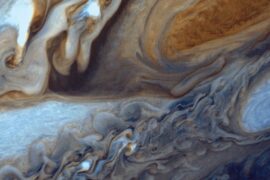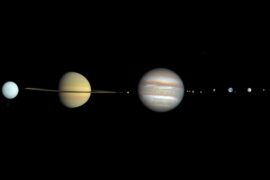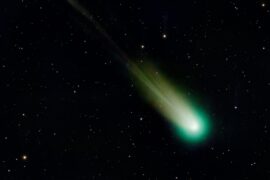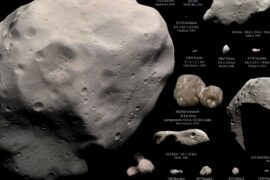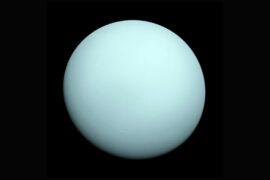Uranus is one of the eight planets in the Solar system. It is second-to-last in order of distance from the Sun. Only Neptune is farther away.
This planet is so far away that it is very hard for scientists to study it. Even the giant telescopes in observatories have a hard time getting good pictures out of it and a spacecraft would take between 7 and 9 years just to get there.
While there is still a lot to learn about it, Uranus is a very interesting planet. In this article, we’ll learn some fun Uranus facts for kids so you can have a good understanding of the things that make this planet so awesome.
Uranus facts for kids
1. Uranus is a planet made out of gas
Not every planet has a rocky surface where you can stand on like Earth. All of the outer planets in the Solar system (Jupiter, Saturn, Uranus, and Neptune) are mostly made out of gas.
If you could drop something from space into a gas planet like Uranus, it would not have anything to stop it. It would just keep on falling until the center (core) of the planet.
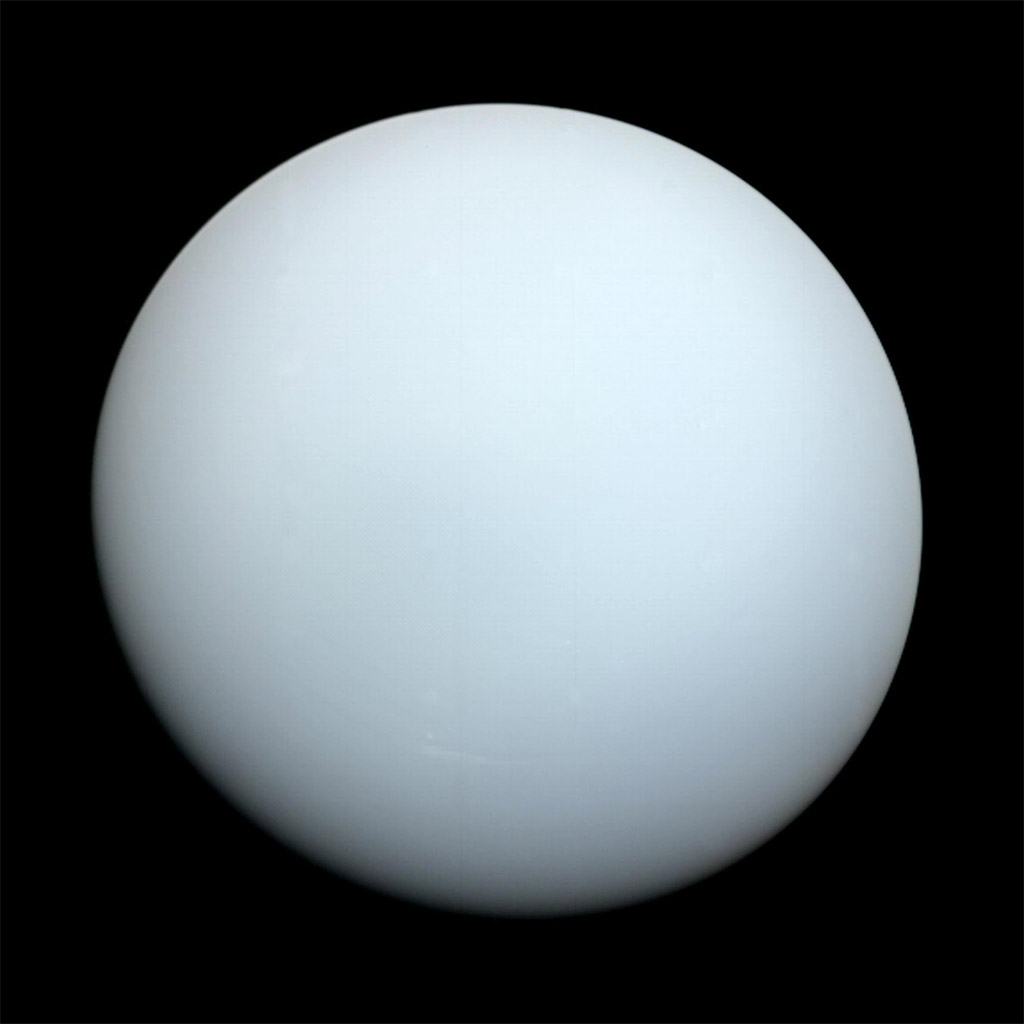
2. It is a very cold planet
Being one of the planets that are farthest away from the Sun, Uranus does not get a lot of sunlight.
The average temperature on the planet is -320°F (-190°C). For comparison, that is much, much colder than the North Pole, where the temperature is around −40° F (−40° C).
In the example above of the object falling into Uranus, the object would freeze and break way before reaching the core.
3. Uranus has the same age as Earth
After the Sun formed. A big disc of dust and gas formed around it. When all of those tiny pieces of rock started to hit each other, they formed into bigger pieces, and after a long time, the planets formed from all that.
This happened around 4.5 billion years ago, and it means that all the planets, including Uranus and Earth formed more or less at the same time, making them the same age.
4. Uranus has 27 moons
Big planets like Uranus tend to have more moons than smaller planets like Mars or Earth. This is because they have a greater gravity pull, which allows them to capture asteroids or comets into their orbit and keep them as natural satellites (or moons as we commonly call them).
Uranus has 27 moons of all kinds of sizes. Its largest Moon is called Titania which is about half the size of our Moon. The smallest one is called Trinculo and is only about 18 kilometers (11 miles) long.
5. Uranus was the first planet that was discovered with a telescope
Ancient civilizations knew about the planets. But they only knew about the first six (up to Saturn) because those are the ones that can be observed without help from a telescope.
After the invention of the telescope, it still took almost 200 years for a new planet to be discovered, and it was Uranus. The person who discovered it was the astronomer William Herschell in 1781. At first, Herschell thought he was seeing a very large comet, but after a couple of years of observation, it was confirmed that it was a planet.
6. It is named after the god of the sky
The Greeks and Romans named the planets from Mercury to Saturn after mythological gods. But when Saturn was discovered, there was a debate about how it should be named.
Many names were suggested. William Herschell, who discovered Uranus, wanted to name it Georgium Sidus (Geaorge’s star) after King George III who was funding his research.
Thankfully, the proposal was not taken well by the scientific community. Many years later, an agreement was reached to keep the tradition of naming it after a Greek god. The name Ouranos was selected after the god of the sky.
7. Uranus’ moons are named after literary characters
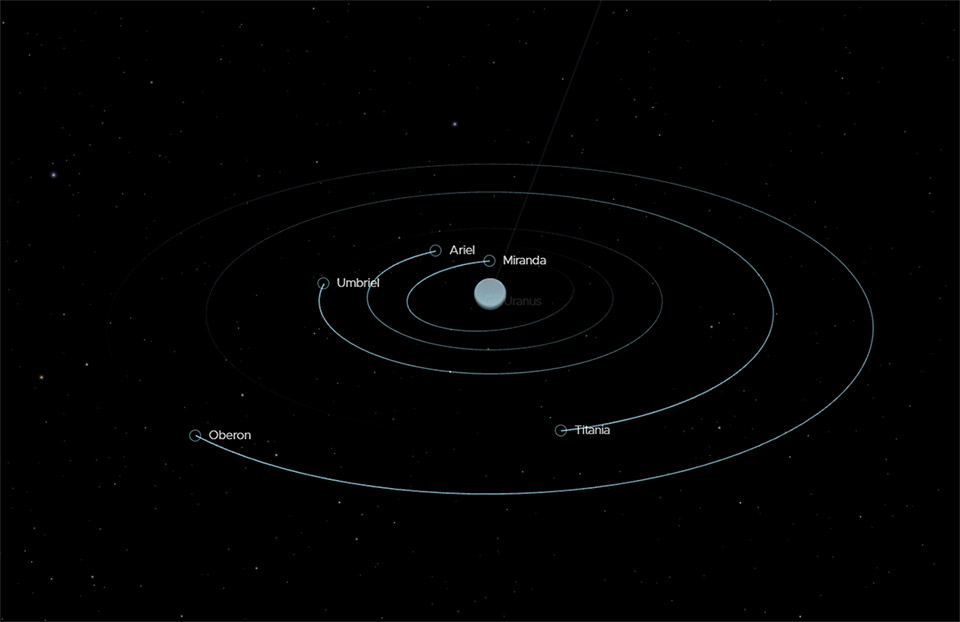
William Herschell did not get to name Uranus, the planet he had discovered. However, he did get the honor of naming the two moons he discovered along with the planet, which also happen to be Uranus’ two largest moons.
He decided to name them after magical spirits from the works of William Shakespeare and called them Titania and Oberon.
As more of Uranus’ moons were discovered, the convention of naming them after Shakespeare’s characters continued. Some have also been named after characters in Alexander Pope’s works.
As of today, Uranus has a total of 27 moons that have been discovered and it is the only planet that has this naming tradition for its moons.
8. Uranus rotates sideways
One of the most fun facts about Uranus is that it does not rotate like all the other planets in the Solar system. While all the other planets rotate to one side or the other, Uranus rotates almost sideways, like a bowling bowl.
Uranus is the only planet that does this. Astronomers believe that it happened because billions of years ago it was hit by another planet and that changed the way it rotated.
9. Uranus is the third biggest planet in the Solar system
Uranus has a radius of 25,362 kilometers (15,759 miles). That is 4 times wider than Earth’s.
This means that you could fit 63 planets the size of the Earth into Uranus. It also makes it the third biggest planet in the Solar system, just behind Jupiter and Saturn.
Gas planets than Uranus tend to be larger than rocky planets like Earth or Mars. At least that is the case in the Solar system.
10. Uranus has rings
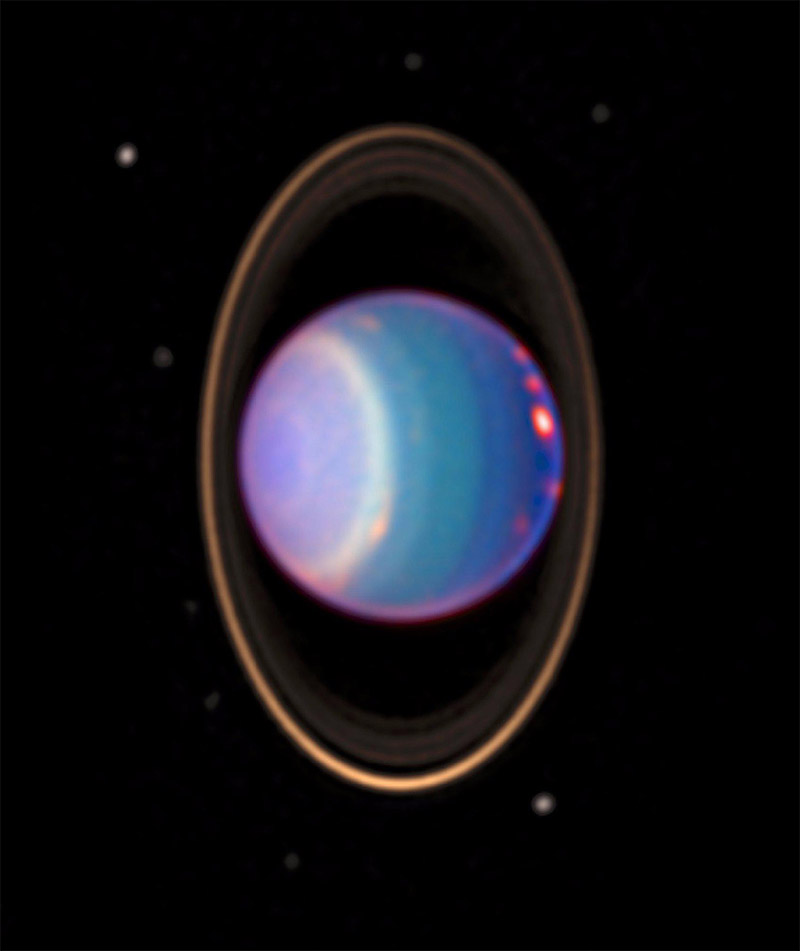
Saturn is well known for its rings. But it is not the only planet in the Solar system that has them.
Uranus also has rings, but they are much thinner and can’t be seen with a home telescope. Powerful space telescopes like the Hubble and the James Webb telescope are able to take photos of them.
Uranus’ rings are made out of small specks of dust and tiny pieces of rock.
11. Uranus is also called an “ice giant”
Uranus is part of the four “gas giants” of the Solar system, but it is also sometimes referred to as an “ice giant” along with Neptune.
This is because both planets are so cold that a lot of the gas they contain is constantly in an “icy” state.
This does not mean that Uranus or Neptune have solid ice because as mentioned above, they do not have a solid surface.
12. Only one spacecraft has flown by Uranus
Uranus is so far away that it would be really hard to send a probe to study from up close. But in 1977, an alignment of the planets opened an opportunity for a spacecraft to be able to fly by all of the outer planets.
NASA took the chance and sent the Voyager 2 spacecraft. Its mission was to fly by, capture data, and photograph Jupiter, Saturn, Uranus, and Neptune from up close.
The Voyager 2 arrived at Uranus in 1986 and sent the only photos of the planet from up close that we have to this day.
Enjoyed this article?
Get daily 10-minute PDFs about astronomy to read before bed!
Sign up for our upcoming micro-learning service where you will learn something new about space and beyond every day while winding down.


